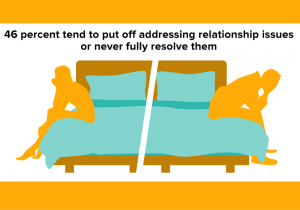
Hypoactive Sexual Desire Disorder (HSDD)
Sometimes you want sex, sometimes you don’t. That’s normal. Every woman has her own level of what is considered “normal” based on their own experiences and biology.
The quality of your sex life affects your entire life. So, if you’re having a hard time enjoying or desiring sex it’s important to find out why. There are a number of reasons for this, such as culture, background, and past sexual experiences. Emotional, physical, and psychological factors can affect intimacy and sex, too. These can include:
Troubles with having sex or enjoying it are sometimes called female sexual dysfunction or female sexual difficulties (FSD). It can be life-long or can develop over time. FSD is defined as persistent problems with sexual response, desire, orgasm, or pain that causes you distress or strains your relationship with your partner. While every woman deserves a fulfilling sex life, more than 40% of women will have sexual difficulties at some point in their lives.
There are four main types of FSD:
Many women experience one or more of these problems at one point or another, from trouble reaching orgasm or just not feeling “in the mood.” But for some women, these problems are ongoing and can affect a woman’s sense of well being and relationships.
The good news is that these problems can be treated. While there’s no magic bullet promising a quick and easy cure, there are ways to deal with sexual difficulties. The first step is to look at the possible causes.
There are a number of physical conditions that can affect a woman’s sexual response and reduce pleasure and satisfaction. For example, conditions such as thyroid disease and diabetes can result in reduced vaginal lubrication which can make sex uncomfortable and less satisfying. Hormonal issues, such low estrogen levels, can also reduce lubrication and thin the vaginal lining, while lowered testosterone levels can lower the sex drive.
A decreased sex drive can also be the result of certain medications, including drugs to control blood pressure and some antidepressants, and can make it difficult for a woman to reach orgasm. Endometriosis, uterine fibroids, or vaginitis can all make sex uncomfortable or even painful, as can vaginal infections, pelvic surgery or bowel difficulties.
A woman’s sexual response involves not just the body but the mind, of course, and emotional factors play a role in sexual satisfaction. Anxiety, depression, and simply the stresses of everyday life can contribute to sexual problems, as can problems in a relationship. Issues with body image as well as religious and/or cultural factors can also contribute.
Sometimes the issues that lead to sexual problems are temporary – such as stress or medication use – and can be resolved easily. But when does the occasional difficulty become a real problem? If difficulties are ongoing and causing distress, then it may be time to seek help.
A healthcare provider can help you figure out what might be behind the difficulties you’re experiencing and find ways to resolve the problem. Your provider will likely ask you about:
Depending on your symptoms and concerns, she or he may do a pelvic exam to look for signs of infection or irritation or perhaps a pelvic ultrasound to identify any anatomical issues. If psychological issues seem to be the principle cause of the problem, your provider may offer a referral to a counselor.
If your problem has a hormonal cause, such as low estrogen or a thyroid deficiency, the provider may suggest a medical treatment option. She or he might also suggest adjusting or changing your current medication whose side effects may be causing your symptoms. But there are also non-medical options that can help.
Communication: Talk to your partner about your concerns and problems you are having and what your needs are. A caring partner will be willing to work with you to find solutions.
Experiment: Sometimes trying something new can help. For example, if pain is an issue, try new positions to discover what might be more comfortable. To address a lack of arousal or trouble reaching orgasm, you might spend more time on foreplay, explore sensual massage, or experiment with vibrators or other sex toys to see what you find pleasurable.
Lubrication: Vaginal dryness can make sex uncomfortable, even painful. While this can be a result of different problem and medications, is it also a common problem among post-menopausal women. Using lubricants can make sex more comfortable and enjoyable. For some women, local hormonal therapy, such as an estrogen cream, might be recommended by a provider.
Talk with a professional: A counselor or therapist who specializes in sexuality and sexual problems can help both you and your partner better understand your sexual problems and offer and strategies to improve intimacy. The American Association of Sexuality Educators, Counselors and Therapists (AASECT) allows you to search for a sex therapist or counselor in your area.

Listen to ASHA’s three-part conversation with sociologist and sexual health expert Dr. Pepper Schwartz on female sexual difficulties. She discusses the range of female sexual difficulties, the impact of sexual difficulties on a relationship, and offers practical advice and resources for women (and their partners).

Sometimes you want sex, sometimes you don’t. That’s normal. Every woman has her own level of what is considered “normal” based on their own experiences and biology.

Sex shouldn’t hurt…But sometimes it does. Between 10% and 20% of women in the U.S. experience persistent pain during sex—a condition referred to as dyspareunia.

For some women, reaching orgasm can be difficult. Fortunately, there are steps you can take to address the problem and have a more satisfying sex life.

When a woman becomes sexually aroused, her body will respond with physical and emotional changes. For some women, though, this arousal response doesn’t happen as expected. The desire may be there, but the body or the mind (or both) don’t respond.

Sociologist, sexologist and relationship expert Dr. Pepper Schwartz joins our Sex+Health podcast for a three-part discussion on the range of female sexual difficulties and offers practical advice and resources for women (and their partners).

If you struggle with incontinence and have concerns about leaking during sex, you’re not alone. The American Foundation for Urologic Disease reports that one in three women with stress incontinence avoids sex due to fears of leaking during intercourse or orgasm. But incontinence during sex

Why aren’t couples talking about sex? Despite increasing public acceptance of sex as an everyday topic and a trend towards more empowered health consumers, people continue to feel uncomfortable talking about sexual health issues—even behind closed doors.
ASHA believes that all people have the right to the information and services that will help them to have optimum sexual health. We envision a time when stigma is no longer associated with sexual health and our nation is united in its belief that sexuality is a normal, healthy, and positive aspect of human life.
ABOUT
GET INVOLVED
ASHA WEBSITES
GET HELP
© 2025 American Sexual Health Association